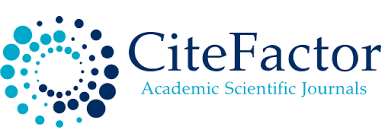AGGRESSIVE ANGIOMYXOMA OF VULVA IN YOUNG FEMALE
DOI:
https://doi.org/10.54361/LJMR.19.1.23Keywords:
Aggressive angiomyxoma, Mesenchymal tumor, Vulvar tumorAbstract
Aggressive Angiomyxoma (AA) is an uncommon, locally invasive mesenchymal neoplasm predominantly affecting women of reproductive age. It is characterized by a notable potential for local recurrence, making it critical to distinguish AA from other mesenchymal tumors in the same anatomical regions. This tumor typically arises within the soft tissues of the pelvic region, perineum, and lower genital tract. While metastasis remains rare, the tumor's aggressive nature and propensity for local relapse highlight its clinical significance. The majority of cases occur in women during their reproductive years, underlining the age-specific risk.Presentation of caseA 23-year-old married Libyan woman presented with a gradually enlarging mass on the right labia majora, which had been present for two years. The patient’s primary concern was the increasing size of the mass, accompanied by ulceration and a clear discharge, which began in the final two months of her pregnancy and persisted for two months postpartum. There was no history of bleeding or sexual difficulties, and her menstrual cycles were regular with normal flow. Upon local examination, a well-circumscribed, pedunculated mass measuring 12 cm × 7 cm was observed (see Figures 1, 2, and 3). The mass was non-tender, with a fleshy, soft, and spongy consistency. The overlying ulcer measured 5 cm × 1 cm, with the floor showing unhealthy pale granulation tissue. Bilateral inguinal lymph nodes were not palpably enlarged. Following informed written consent, the patient underwent wide local excision of the mass along with the surrounding tissue under general anesthesia. Histopathological examination revealed the diagnosis of aggressive angiomyxoma.ConclusionAggressive angiomyxoma constitutes a key differential diagnosis when evaluating vulvovaginal masses in female patients. Given the tumor's documented propensity for local recurrence, precise diagnosis and comprehensive management strategies utilizing a multidisciplinary approach are paramount in optimizing patient care.
Downloads
References
1. Abu saadeh F, Galvn D , Alsharbaty MJ , paravaginal aggressive angiomyxoma . BMJ Case rep 2015, pii; ber2014207287.
2. Zamani M, Mollabashi M, Mehrabi N, Alizadeh S. Aggressive angiomyxoma of vulva in 28-years old patient: A case report of second recurrence. Ann Med Surg (Lond). 2021 Aug 11; 69:102706.
3. Gaurav A, Gill P, Khoiwal K, Chowdhuri S, Kapoor D, Chaturvedi J. Aggressive angiomyxoma of the vulva—a rare entity: case report and review of literature. Int J Reprod Contracept Obstet Gynecol. 2020; 9:2605.
4. Lee, K. A., Seo, J. W., Yoon, N. R., Lee, J. W., Kim, B. G., & Bae, D. S. (2014). Aggressive angiomyxoma of the vulva: A case report. Obstetrics & gynecology science, 57(2), 164–167.
5. Rezai S. Aggressive angiomyxoma of the vulva in a teenager, a case report and review of literature. Obstet Gynecol Int J. 2016.
6. Nucci MR, weremowicz S, Neskey DM, Stornberger K, Tallini G Morton CC, et al .chromosomal translocation t (8; 12) induces aberrant HMGIC expression in aggressive angiomyxoma of vulva. Genes chromosomes cancer. 2001 32(2):127-6.
7. Joseph S, Helm J, Villegas E, Figueroa-Bodine J, Anderson J. Aggressive angiomyxoma: a rare cause of a vulvar mass. J Med Oncol Ther. 2020; 5:81–3.
8. Cordeiro Filho R, Carvalho AA, Carvalho RA, et al. Endourologic Treatment for Aggressive Angiomyxoma of the Bladder. J Endourol Case Rep. 2019; 5(1): 19–21
9. G ̈ung ̈T, Zengero ̆gluS, KaleliA, KuzeyGM, Aggressive angiomyxoma of the vulva and vagina -a common problem: misdiagnosis. European J Obstetr Gynecol Repro Biol. 2004; 112(1):114-6
10. Brzezinska BN, Clements AE, Rath KS, et al. A persistent mass: A case of aggressive Angiomyxoma of the vulva. Gynecol Oncol Rep. 2018; 24: 15–17.
11. Sutton BJ, Laudadio J. Aggressive angiomyxoma. Arch Pathol Lab Med. 2012; 136(2): 217–221.
12. PadmavathyL, RaoLL, LakshmiMD, SylvesterN. Aggressive angiomyxoma.IndianDermatol Online J. 2014; 5(2):151-3.
13. DahiyaK, JainS, DuhanN, NandaS, KunduP. Aggressive angiomyxoma of vulva and vagina: a series of three cases and review of literature. Arch Gynecol Obstet. 2011; 283(5):1145-8.
14. BaggaR, KeepanasserilA, SuriV,NijhawanR. Aggressive angiomyxoma of the vulva in pregnancy: a case report and review of management options. Medscape General Medicine.2007; 9:16.
Downloads
Published
Issue
Section
License
Copyright (c) 2025 SumiaTaher Dra, Fadia Towfick Oshkondale (Author)

This work is licensed under a Creative Commons Attribution-NonCommercial-NoDerivatives 4.0 International License.
Open Access Policy
Libyan journal of medical Research (LJMR).is an open journal, therefore there are no fees required for downloading any publication from the journal website by authors, readers, and institution.
The journal applies the license of CC BY (a Creative Commons Attribution 4.0 International license). This license allows authors to keep ownership f the copyright of their papers. But this license permits any user to download , print out, extract, reuse, archive, and distribute the article, so long as appropriate credit is given to the authors and the source of the work.
The license ensures that the article will be available as widely as possible and that the article can be included in any scientific archive.
Editorial Policy
The publication of an article in a peer reviewed journal is an essential model for Libyan journal of medical Research (LJMR). It is necessary to agree upon standards of expected ethical behavior for all parties involved in the act of publishing: the author, the journal editorial, the peer reviewer and the publisher.
Any manuscript or substantial parts of it, submitted to the journal must not be under consideration by any other journal. In general, the manuscript should not have already been published in any journal or other citable form, although it may have been deposited on a preprint server. Authors are required to ensure that no material submitted as part of a manuscript infringes existing copyrights, or the rights of a third party.
Authorship Policy
The manuscript authorship should be limited to those who have made a significant contribution and intellectual input to the research submitted to the journal, including design, performance, interpretation of the reported study, and writing the manuscript. All those who have made significant contributions should be listed as co-authors.
Others who have participated in certain substantive aspects of the manuscript but without intellectual input should only be recognized in the acknowledgements section of the manuscript. Also, one of the authors should be selected as the corresponding author to communicate with the journal and approve the final version of the manuscript for publication in the LJMR.
Peer-review Policy
- All the manuscripts submitted to LJMR will be subjected to the double-blinded peer-review process;
- The manuscript will be reviewed by two suitable experts in the respective subject area.
- Reports of all the reviewers will be considered while deciding on acceptance/revision or rejection of a manuscript.
- Editor-In-Chief will make the final decision, based on the reviewer’s comments.
- Editor-In-Chief can ask one or more advisory board members for their suggestions upon a manuscript, before making the final decision.
- Associate editor and review editors provide administrative support to maintain the integrity of the peer-review process.
- In case, authors challenge the editor’s negative decision with suitable arguments, the manuscript can be sent to one more reviewer and the final decision will be made based upon his recommendations.














